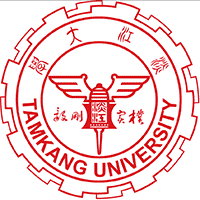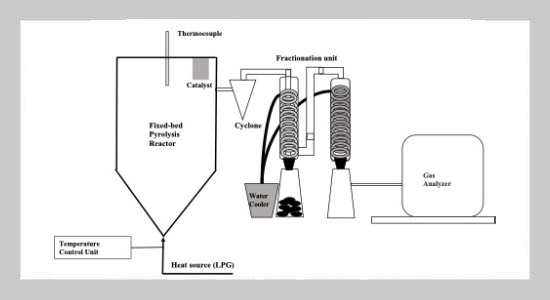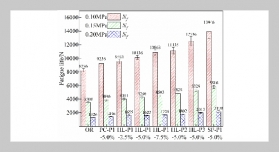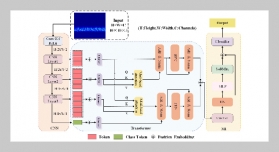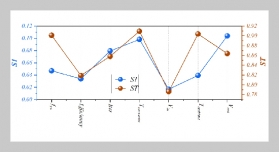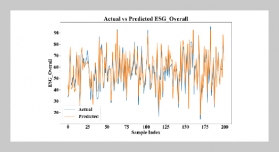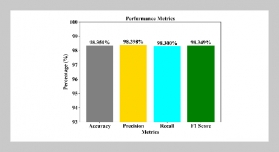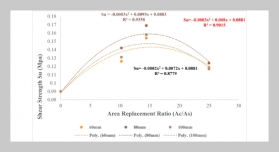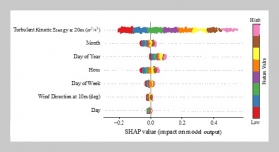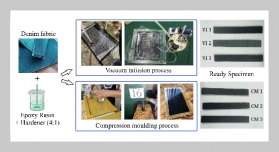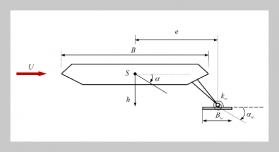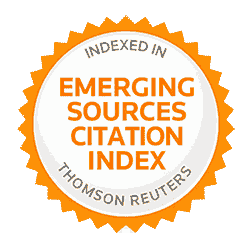- [1] N. Wichai-Utcha and O. Chavalparit, (2019) "3Rs Policy and plastic waste management in Thailand" Journal of Material Cycles and Waste Management 21: 10–22.
- [2] S. Serranti and G. Bonifazi. "Techniques for separation of plastic wastes". In: Use of recycled plastics in eco-efficient concrete. Elsevier, 2019, 9–37.
- [3] E. N. Kalali, S. Lotfian, M. E. Shabestari, S. Khayatzadeh, C. Zhao, and H. Y. Nezhad, (2023) "A critical review of the current progress of plastic waste recycling technology in structural materials" Current Opinion in Green and Sustainable Chemistry 40: 100763.
- [4] P. Basu. Biomass gasification, pyrolysis and torrefaction: practical design and theory. Academic press, 2018.
- [5] B. Igliński, W. Kujawski, and U. Kiełkowska, (2023) "Pyrolysis of waste biomass: technical and process achievements, and future development—a review" Energies 16(4): 1829.
- [6] I. Wojnowska-Baryła, K. Bernat, and M. Zaborowska, (2022) "Plastic waste degradation in landfill conditions: the problem with microplastics, and their direct and in Environmental Research and Public Health 19(20): 13223.
- [7] O. A. Alabi, K. I. Ologbonjaye, O. Awosolu, and O. E. Alalade, (2019) “Public and environmental health effects of plastic wastes disposal: a review" J Toxicol Risk As sess 5(021): 1–13.
- [8] E. T. Aisien, I. C.Otuya,andF.A.Aisien,(2021)“Ther mal and catalytic pyrolysis of waste polypropylene plastic using spent FCC catalyst" Environmental Technology &Innovation 22: 101455.
- [9] P. Gaurh and H. Pramanik, (2018) “Production of benzene/toluene/ethyl benzene/xylene (BTEX) via multiphase catalytic pyrolysis of hazardous waste polyethylene using low cost fly ash synthesized natural catalyst" Waste management 77: 114–130.
- [10] P. Kongngoen, W. Phetwarotai, S. Assabumrungrat, and N. Phusunti, (2023) “Possible use of spent FCC catalyst for upgrading of wax from the pyrolysis of plastics to liquid fuel" Journal of Analytical and Applied Pyrolysis 173: 106076.
- [11] H. Panchasara, N. H. Samrat, and N. Islam, (2021) “Greenhouse gas emissions trends and mitigation measures in Australian agriculture sector—A review" Agriculture 11(2): 85.
- [12] E. Hartulistiyoso, F. A. Sigiro, and M. Yulianto, (2015) “Temperature distribution of the plastics Pyrolysis process to produce fuel at 450oC" Procedia Environmental Sciences 28: 234–241.
- [13] U. Rahotharn, M. Khemkhao, and P. R. Kaew pengkrow, (2023) “Solid waste management by RDF production from landfilled waste to renewable fuel of Nonthaburi" International Journal of Renewable Energy Development 12(5): 968.
- [14] K. Saeaung, N. Phusunti, W. Phetwarotai, S. Ass abumrungrat, and B. Cheirsilp, (2021) “Catalytic py rolysis of petroleum-based and biodegradable plastic waste to obtain high-value chemicals" Waste Management 127: 101–111.
- [15] S. Valizadeh, B. Valizadeh, M. W. Seo, Y. J. Choi, J. Lee, W.-H. Chen, K.-Y. A. Lin, and Y.-K. Park, (2024) “Re cent advances in liquid fuel production from plastic waste via pyrolysis: Emphasis on polyolefins and polystyrene" Environmental Research 246: 118154.
- [16] L. Dai, S. Lata, K. Cobb, R. Zou, H. Lei, P. Chen, and R. Ruan, (2024) “Recent advances in polyolefinic plastic pyrolysis to produce fuels and chemicals" Journal of Analytical and Applied Pyrolysis: 106551.
- [17] P. Kaewpengkrow, D. Atong, and V. Sricharoen chaikul, (2012) “Pyrolysis and gasification of landfilled plastic wastes with Ni- Mg- La/Al2O3 catalyst" Environmental Technology 33(22): 2489–2495.
- [18] A. C. Leri and A. P. Pavia, (2022) “Analysis of plastic waste for sorting in recycling plants: an inquiry-based FTIR spectroscopy experiment for the organic chemistry laboratory" Journal of Chemical Education 99(2): 1008–1013.
- [19] S. L. Wong, S. Armenise, B. B. Nyakuma, A. Bogush, S. Towers, C. H. Lee, K. Y. Wong, T. H. Lee, E. Rebrov, and M. Muñoz, (2023) “Plastic pyrolysis over HZSM-5 zeolite and fluid catalytic cracking catalyst under ultra fast heating" Journal of Analytical and Applied Pyrolysis 169: 105793.
- [20] Z.LeiandS.Pavia,(2023)“Potentialofspentfluidcracking catalyst (FCC) waste for low-carbon cement production. Effect of treatments to enhance reactivity" Cement 14: 100081.
- [21] Y. Zhang, Z. Yang, D. Zhang, P. Lei, L. Liu, J. Ma, and Z. Zhang, (2025) “Synthesis and catalytic activity of municipal solid waste incineration bottom ash derived catalyst for dry reforming of methane" Fuel 379: 132993.
- [22] T. Maneerung, S. Kawi, and C.-H. Wang, (2015) “Biomass gasification bottom ash as a source of CaO catalyst for biodiesel production via transesterification of palm oil" Energy Conversion and Management 92: 234–243.
- [23] R. K. Mishra, K. Mohanty, and X. Wang, (2020) “Pyrolysis kinetic behavior and Py-GC–MS analysis of waste dahlia flowers into renewable fuel and value-added chemicals" Fuel 260: 116338.
- [24] R. Miandad, M. Barakat, A. S. Aburiazaiza, M. Rehan, I. Ismail, and A. Nizami, (2017) “Effect of plastic waste types on pyrolysis liquid oil" International biodeterioration & biodegradation 119: 239–252.
- [25] R. Prurapark, K. Owjaraen, B. Saengphrom, I. Limthongtip, and N. Tongam, (2020) “Effect of temper ature on pyrolysis oil using high-density polyethylene and polyethylene terephthalate sources from mobile pyrolysis plant" Frontiers in Energy Research 8: 541535.
- [26] R. Miandad, M. Barakat, M. Rehan, A. Aburiazaiza, J. Gardy, and A. Nizami, (2018) “Effect of advanced catalysts on tire waste pyrolysis oil" Process Safety and Environmental Protection 116: 542–552.
- [27] J.-P. Lange, (2021) “Managing plastic waste-sorting, re cycling, disposal, and product redesign" ACS Sustain able Chemistry & Engineering 9(47): 15722–15738.
- [28] S. Ali, R. Hafriz, A. Shamsuddin, A. Salmiaton, et al., (2022) “Production of liquid biofuel from sludge palm oil (SPO) using heterogeneous catalytic pyrolysis" Journal of Applied Science and Engineering 26(4): 529–538.
- [29] N. Pringsakul, R. Prommas, and P. R. Kaew pengkrow, (2023) “Analysis of waste optical fiber cables for converting to fuel through pyrolysis" Chiang Mai Journal of Science 50(1):
- [30] K. P. Bhatt, S. Patel, D. S. Upadhyay, and R. N. Pa tel, (2024) “Production of hydrogen-rich fuel gas from waste plastics using continuous plasma pyrolysis reactor" Journal of Environmental Management 356: 120446.
- [31] K. M.Rajendran, V. Chintala, A. Sharma, S. Pal, J. K. Pandey, and P. Ghodke, (2020) “Review of catalyst materials in achieving the liquid hydrocarbon fuels from municipal mixed plastic waste (MMPW)" Materials To day Communications 24: 100982.
- [32] L. Xu, J. Yu, W. Wang, G. Wan, L. Lin, and L. Sun, (2023) “Upgrading and PAHs formation during used lubricant oil pyrolysis at different heating modes" Journal of Analytical and Applied Pyrolysis 169: 105813.
- [33] S. Li, X. Zhao, P. Wu, M. Lu, Z. Xu, S. Zhu, and H. Liang, (2022) “Evolution of PAHs in the mobile phase of low-rank coal during medium–low-temperature pyrolysis" Journal of Analytical and Applied Pyrolysis 168: 105757.
- [34] J. Lai, Y. Meng, Y. Yan, E. Lester, T. Wu, and C. H. Pang, (2021) “Catalytic pyrolysis of linear low-density polyethylene using recycled coal ash: Kinetic study and environmental evaluation" Korean Journal of Chemical Engineering 38: 2235–2246.
- [35] X.Chen,Z.Liu,S.Li, S. Xia, N. Cai, W. Chen, Y. Chen, H. Yang, X. Wang, and H. Chen, (2021) “Catalytic pyrolysis of biomass to produce aromatic hydrocarbons over calcined dolomite and ZSM-5" Energy & Fuels 35(20): 16629–16636.
- [36] Y. Wang, A. Akbarzadeh, L. Chong, J. Du, N. Tahir, and M. K. Awasthi, (2022) “Catalytic pyrolysis of lignocellulosic biomass for bio-oil production: A review" Chemosphere 297: 134181.
- [37] Y. Zheng, L. Tao, X. Yang, Y. Huang, C. Liu, and Z. Zheng, (2019) “Comparative study on pyrolysis and catalytic pyrolysis upgrading of biomass model compounds: Thermochemical behaviors, kinetics, and aromatic hydro carbon formation" Journal of the Energy Institute 92(5): 1348–1363.
- [38] A. C. M. Loy, S. Yusup, M. K. Lam, B. L. F. Chin, M. Shahbaz, A. Yamamoto, and M. N. Acda, (2018) “The effect of industrial waste coal bottom ash as catalyst in catalytic pyrolysis of rice husk for syngas production" Energy Conversion and Management 165: 541–554.
- [39] M. Lahafdoozian, H. Khoshkroudmansouri, S. H. Zein, and A. Jalil, (2024) “Hydrogen production from plastic waste: A comprehensive simulation and machine learning study" International Journal of Hydrogen Energy 59: 465–479.
- [40] A. A. Al-Qadri, U. Ahmed, N. Ahmad, A. G. A. Jameel, U. Zahid, and S. R. Naqvi, (2024) “A review of hydrogen generation through gasification and pyrolysis of waste plastic and tires: Opportunities and challenges" International Journal of Hydrogen Energy 77: 1185–1204.
- [41] H.H.Shah, M. Amin, A. Iqbal, I. Nadeem, M. Kalin, A. M. Soomar, and A. M. Galal, (2023) “A review on gasification and pyrolysis of waste plastics" Frontiers in Chemistry 10: 960894.
- [42] A. L. Jadhav, P. A. Gardi, and P. A. Kadam, (2024) “Critical Review of Heterogeneous Catalysts: Manufacturing of Fuel from Waste Plastic Pyrolysis" Korean Journal of Chemical Engineering 41(11): 2937–2960.
